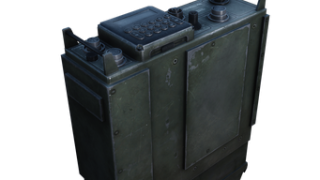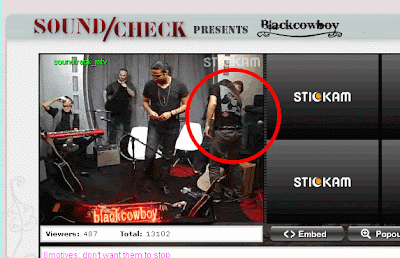Beacon deployment strategies: battlefield tips (part 3)
Most beacon manufacturers offer basic software to configure the devices they supply. Familiarize yourself with its features and see what limitations they have. In most cases, they will not allow you to collect detailed data or to export it.
Medium to large deployments will require a specialized platform. Fortunately, there are already several solutions available on the market that are offered in a software-as-a-service model. When reviewing vendor offerings, make sure they offer local support (especially important if you want to entrust them with the installation and care of the infrastructure). Also check what modules are provided. The ones you should pay attention to and their main features you should look for:
1. Analytics: ability to use floor plans, data visualization on floor plans, ability to export data, integration with external software.
2. Communication: create and manage push campaigns, the ability to automatically create segments based on preset rules, behavioral targeting, the ability to import data (e.g. demographics) from external systems.
3. Indoor navigation: especially important for large areas. Integrate navigation with other modules – mainly with Communication, ability to work on room plans.
4. Infrastructure administration: searching for inactive devices, determining the state of battery charge, inventory of owned device infrastructure.
When talking to the provider, make sure what their data collection policy is. You should be able to guarantee yourself exclusive rights to use the data collected from the system to avoid exposing your customers to unwanted future communications.
User activation plan
The implementation of a beacon project should be preceded by the preparation of a communication plan and preparation for the implementation of proximity technology. This is the moment when you should take care of proper application coverage. Use point of sale communication to promote your app (e.g. (e.g., posters or signs communicating the benefits of installation).
Also use online installation acquisition channels, e.g. Facebook and Google advertising networks or tools. Introduce unique benefits to users e.g. special discount offers.
If you are not able to create or promote your app, consider using external apps. Some publishers already offer such forms of partnerships, and we estimate that in time specialized publisher networks will emerge that can support proximity campaigns based on your infrastructure.
When adding proximity SDKs to applications, make sure to ask users for appropriate permissions to use Bluetooth, location services and the ability to send push notifications.
When creating a project schedule, take into account that updating applications in mobile markets takes from a few days (Google Play) to a few weeks (App Store). Remember also that it will take some time before most users update their applications. Take this into account in your communication planning and beacon deployment schedule.
Complementary technologies
Beacons, as I mentioned in the first part of the text, require a mobile app installed on users' smartphones. Every time the app comes close to a beacon, it can report the event to the proximity platform. This means that in order for the communication and data collection system to work smoothly, you should provide your clients with Wi-Fi. This will allow them to conveniently connect to the internet for free, and you will be able to more effectively collect data about their visits.
Remember that properly implemented Wi-Fi can also provide important signals and can provide information about user traffic and target audience potential by measuring the number of active Wi-Fi receivers installed on smartphones. In Poland you will find several providers of this type of technology, e.g.in. Justtag Wi-Fi or Aerohive.
And don't forget about QR codes. A lot of criticism has been made about the effectiveness of this technology, but it is still one of the easiest tools to download an app. To increase the range of your beacons, place them at the entrance, exit and at the product racks.
Respect for privacy
Make sure to let customers know that you intend to collect additional data about their behavior, even if that data will be anonymous. Explain for what purposes and how you plan to use this data. Try to adopt their point of view. Argue for the benefits they will be able to receive (e.g. additional points in a loyalty program, the ability to mark physical products as favorites).
Also, make sure that data is collected in accordance with the Data Protection Act and the collection meets GIODO guidelines.
Respect privacy. Using proximity events to communicate. Try to think in what places and at what time they will bring the greatest benefit. Limit their number – look for a platform that will allow you to set daily, weekly and monthly limits on the number of messages sent.
Use segmentation tools based on user behavior to personalize the messages you send. Try to tailor your offer to what they actually need and are looking for. The correct use of beacons can produce extraordinary results, such as a 20-fold increase in purchase intent.
Long-term goals
You should finish the implementation plan by defining measurable indicators (the so-called "metrics"). The data you collect (e.g. KPI's) will determine the success of your project. Examples of metrics that can indicate a successful implementation are:
– increasing user engagement;
– translation of communication into purchase intention (measured e.g. by tracking the redemption of issued coupons at checkout);
– increased customer transformation;
– creating new customer segments;
– increase in the number of installed applications over the measured period;
– Increased use of mobile application in physical points of sale.
Every business has different goals and indicators – determine what is important in your case, and assume periods in which you will measure these indicators.
Above all – don't focus on technology. Beacons are one of the many – if used correctly – very effective solutions that you can use. Think about how the data collected with them will help provide a more interesting shopping experience in the long run. Also think about how you can combine this data with information from other communication channels, such as your loyalty program or online store.


